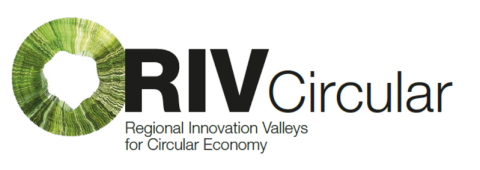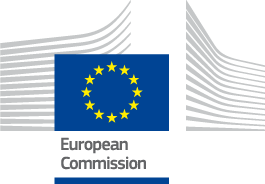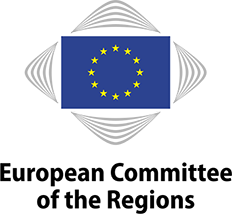
Aligned with the new European Innovation Agenda’s flagship on accelerating and strengthening innovation, RIVCircular proposes the collaboration of six European regions: Madrid, Hauts-de-France, Innlandet, Brandenburg, Kosice and Kyiv in the field of the circular economy. RIVCircular is focused on five key priorities: Construction and Demolition Waste, Waste and Energy Recapture, Electric Vehicle Batteries, Textile Industry and Digitalisation. The aims are to enhance the policy-making process by engaging with stakeholders, civil society and experts, and to build capacities, competence and expertise for professionals related to the circular economy as well as remove barriers.
- Circular economy | Climate and environment | Digital and ICT | Energy | EU/ European | Industry, entrepreneurship and SMEs (enterprise/ startup/ business) | Local and regional | Mobility and Transport | Research and Innovation | Sustainable | Territorial
- Code: 14Stand252092
- Square Brussels , Exhibition area, Grand Hall 2
Exhibitors
Practical information
- When
-
Tue 14/10/2025 at 09:30 to Wed 15/10/2025 at 18:00 CET
- Where
- Square Brussels , Exhibition area, Grand Hall 2
- Type of partnership
- Partnership
- Format
- Stand
- Theme
-
The Right to Stay: unlocking the potential of every territory
- Language
- English

Partners

Fundación para el Conocimiento madri+d
Document
Reporting
Session summary
The stand focused on advancing the circular economy across European regions, emphasizing the importance of cooperation, knowledge exchange, and inclusive policymaking.
Participants highlighted the need for stronger interregional collaboration to scale up circular practices, better policy and funding alignment to support innovation, and more inclusive engagement involving citizens, SMEs, and social enterprises.
As part of the stand, participants were invited to take part in an interactive activity titled “Circular Economy Feedback Stations.” This exercise was designed to collect input, stimulate dialogue, and promote engagement through a hands-on, participatory approach. Visitors contributed insights and reflections in four thematic areas:
1.- Good Practices and Policies Radar – identifying effective regional actions.
2.- Barriers Wall – mapping policy or implementation obstacles.
3.- Challenges Lab – brainstorming potential solutions.
4.- Who Is Missing? – reflecting on underrepresented stakeholders.
This dynamic format created a space for mutual learning, enabling policymakers, practitioners, and citizens to co-create ideas and discuss future directions for circular development in the EU.
RESULTS OF THE INTERACTIVE PRACTICE
Good Practices and Policies Radar:
Participants identified a wide variety of circular economy initiatives already taking place across Europe, reflecting the diversity and creativity of regional approaches. Among them were local monitoring tools such as the Häme Climate Watch for tracking circular progress, and events promoting entrepreneurship, such as FRUSH, a start-up gathering on circular economy held annually since 2017.
Other contributions highlighted innovative materials and reuse practices, like valorising sheep wool, and policy instruments, including the JRC Preparatory Action on Circular Economy (2024–2025) and Interreg Danube WE Circular, showcasing women entrepreneurs’ excellence in circularity.
Participants also cited EU-level initiatives such as DG REGIO’s Peer-to-Peer Community of Practice and practical tools like PROCIRC’s Circular Public Procurement Toolbox. Some mentioned national examples, including the Netherlands’ requirement to use a percentage of recycled materials in road construction, as well as local experiences such as Guimarães’ PAYT SAYR biowaste scheme.
Barriers Wall:
While recognising many positive developments, participants also identified key barriers that hinder the systemic uptake of circular practices.
A recurring theme was fragmentation: many regions are working in isolation, leading to numerous small-scale solutions rather than coordinated efforts capable of achieving European-wide impact. Participants stressed the need to scale through collaboration and create stronger links between local initiatives.
Economic challenges were also noted, including unfair competition from cheap virgin materials imported from outside the EU, and public procurement systems that continue to prioritise low cost over sustainability criteria.
Another aspect regarding barriers for circular economy is related with digitalisation challenges, such as ensuring open data access without compromising confidentiality, and measurement gaps, with the need for clearer and more measurable KPIs to track circular progress.
Other barriers mentioned included industrial resistance to change, difficulties in scaling new technologies, lack of circular education in schools, and limited engagement from property developers. These insights underline the importance of both policy coherence and capacity building across sectors.
Challenges Lab:
In the “Challenges Lab,” participants brainstormed practical and innovative solutions to advance circularity in several key sectors.
In the construction and demolition waste field, participants proposed developing new demolition techniques to enable better material recovery, using policy tools to offset the higher costs of reusing materials, and focusing on market creation for secondary materials rather than isolated pilot projects.
In the area of energy recapture, the discussion highlighted the importance of avoiding energy recovery through incineration where possible, and prioritising low-emission recovery processes that preserve material value.
Digital solutions were seen as a major enabler of circularity. Participants proposed tools such as digital twins, traceability platforms, and digital material passports, as well as initiatives to digitally connect circular actors across Europe, exemplified by Latvia’s CCC Innovation Procurement case.
For electric vehicle batteries, participants suggested improving design for easy disassembly, developing stronger and harmonised regulations, promoting innovation in reuse and recycling, and supporting second-life applications for end-of-life batteries.
Finally, in the textile sector, the group raised concerns about pollutants in production and the dominance of global supply chains, particularly in Asia, calling for more local and sustainable textile ecosystems within Europe.
Who Is Missing?
The final station invited reflection on which key actors remain underrepresented in the circular transition. Participants highlighted the need to involve associations and professional networks, European University Alliances (EUAs), social enterprises, journalists, and environmental activists.
Their inclusion was seen as essential to strengthen communication, raise public awareness, and build stronger links between research, policy, and society. By engaging these groups, regions can enhance outreach, increase transparency, and accelerate behavioural change towards circularity.
Additional notes
Attendance: Approximately 300 participants visited the stand and took part in the interactive activity.
Feedback: The participatory format was very well received. Visitors appreciated the opportunity to express opinions and share ideas in a creative and informal setting. Technical and logistical arrangements worked smoothly throughout the event.
Follow-up: The insights gathered through this interactive exercise will be shared with the interregional panel as relevant information to start working with in the different working groups that are supposed to be form under RIVCircular project: Market barriers to circular economy, capacity building and green and innovative public procurement.




